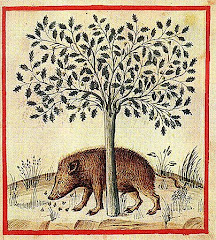It's the evening of the second day of the Smithsonian Folklife Festival 2009. Cameron and I are sitting in the dedicated hotel ballroom ready for one of the evening socials. Already three of the Welsh musicians are sitting at a table across the room playing folksy jigs on flutes and a fiddle. It's exactly the kind of music I love so I'm keen to spend time down here in the hope of hearing more.

It's been a hectic two days for all of us, but by the end of today the shape of the festival is beginning to become clear I think. We started yesterday with an opening ceremony. In the Welsh Dragon tent a series of VIP's and Smithsonian staff took turns to make announcements interspersed with performances from each of the 3 programmes. We heard some brilliant rapping from the Giving Voice programme, a bit of the Las Americas music and also some Welsh harp. I didn't get a chance to see the whole thing since we were expected to be in our tents ready for the festival to open to visitors.

When the moment finally came I hardly noticed the transition. I went from frantically searching for herby samples to put out to being swamped by visitors who were all surprisingly interested in our little garden and all the things we're about. When I next looked up it was to find one of the Smithsonian interns attempting to throw me off our site so that I could get myself lunch. I hadn't realised it was already going on 3 o'clock.
The day continued in this fashion until eventually the visitors dwindled to nothing. I don't think any of us noticed closing time at 5.30 arrive and we certainly missed the main shuttle back to the hotel. We didn't even manage to do any of our demonstrations during the day. Partly because we still hadn't received all the necessary equipment, but also because the visitors are all so keen to talk and love having people participate in the festival. More than once I met seasoned Smithsonian Folklife visitors who asked me how I was enjoying the festival and thanked us for coming to share our culture and crafts with them.

Today was no different. The start was a little more predictable and I began to streamline the set-up process so that I can actually find all the things I want to show people. Again we found ourselves swamped by enthusiastic and curious people from every walk of life and again I was ready to miss lunch if need be because the act of showing people all these plants is so thrilling.
I still haven't started the dyeing demonstrations I'd planned on. I've managed to wash some wool, but issues with electrics and safety means I can't start boiling up big tubs of water just yet. Hopefully tomorrow. Instead I tried to lay out a dye plant rainbow for people to touch and smell. I had madder (Rubia tinctoria) for red, rhubarb (Rheum palmatum) for a sort of orange, chamomile (Matricaria recutita) and barberry (Berberis vulgaris) for yellow, birch (Betula pendula) for green (it can if you boil it long enough), woad (Isatis tinctoria) for blue, logwood (Haematoxylum campechianum) for purple and finally the shells of my mixed xmas nuts for a brown.
Other than that, we've decanted a load of smelly herbs into clear plastic cruet sets for people to sniff. I've found Valerian (Valeriana officinalis) is a real winner with children because they either love it or hate it. Working with kids terrifies me so it's a good prop which I keep close by at all times just in case.
And that's another thing. I knew I would be confronted by children on a regular basis during this festival. I had decided to stomach it and put it down to very good experience and a steep learning curve which is well overdue for me. What I hadn't expected was to be approached by a teacher with a bunch of 7 year olds and be asked to give a 10 minute lesson on plant medicines. I just had to wing the whole thing and decided to give them a few good reasons to eat their broccoli until I discovered that American kids seem to love broccoli. Unheard of! You learn something new every day I guess.
The other inevitable request that we get is to suggest treatments for various conditions. The most common is for relief of mosquito bites, to which end we've placed a curled parsley (Petroselinum crispum) plant nearby from which leaves can be picked to rub on bites. I've tested it on myself twice so far. Once on an ant bite and once on a mozzy bite. Both vanished instantly, but then, the mozzies around here are tiny and feeble compared to what I'm used to in Sweden.
On the whole I'm enjoying myself immensely. The hard work building the garden over the first couple of days was well worth it. Our little verge is perking up and the chickweed (Stellaria media) has already produced new shoots. Everyone loves the garden and there are always people wandering around reading the labels about traditional Welsh cures made from cabbage (Brassica sp.), wormwood (Artemisia absinthium) and tansy (Tanacetum vulgare) amongst other things.

Tim is busy demonstrating hedge laying, but also gets into extended conversations with people about sustainable farming. It seems he can't be dragged away. Alison, biochemist, can tell stories of fascinating new chemicals discovered in plants. I desperately want to borrow her interpretative material for a bit of bedtime reading, but so far I've been too disorganised and knackered to read anything.
Gareth is wowing adults ands children alike with his buckets of leeches. They get so frisky when being transferred from tub to tub that I thought one of them had bitten his finger off on the first day. I've been assured however that they're well fed and shouldn't cause a problem. Having said that, the hotter they get, the more energetic they are and presumably that'll make them hungry more quickly.
As for me, I feel a bit of a cheat. I have my funny "natural dyeing" take on the whole plant medicine thing which means I also need to have wool around. Tim has given me a top quality Welsh Lleyn fleece and I also have carders and drop spindle. Consequently, I find myself drawn into a discussion of crafts rather than medicine on a fairly regular basis and spent a good 15 minutes teaching a teenager how to use the spindle today. Others are simply fascinated by the dyeing process and lots of people want to know about the woad ball I have on display even though it barely has a medicinal use.
All the same, this is about making people excited about plants and encouraging them to recognise the incredible properties they have. I honestly feel that if these visitors have gleaned as much from me as I have from them then it's well worth it and I'm keen for another day.
Which reminds me. Today Gareth and I did our first demonstration in the “Around the Table” tent. The idea here is to run an interactive workshop on your topic of choice. We offered to contribute a demonstration of aromatic water distillation using a simple kitchen method. The real bonus with this was that when the time came, we just happened to be surrounded by a group of adults with varying levels of visual impairment. Whilst Gareth explained the history behind this kind of domestic distillation, I described how I was boiling up rose (Rosa centifolia) petals so that the steam rose and condensed against the upturned lid of the pan (cooled on top with ice) and dripped into a bowl in the center. Afterwards we were able to take our hot rose water around the group so everyone could have a smell. The scent was pungent and perfect for the audience. We now have our water stoppered in a bottle and hope to do a lemon water next time.












2 comments:
It all sounds amazing, Katrina, thank you so much for finding time to share it with us! Hope everything continues to go well.
I appreciate all your hard work. and then taking the time to blog about it. For just a minute I felt I was there.. Joe Todd
Post a Comment